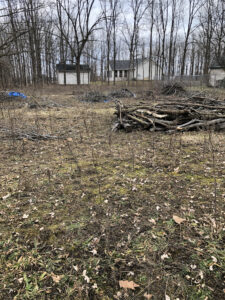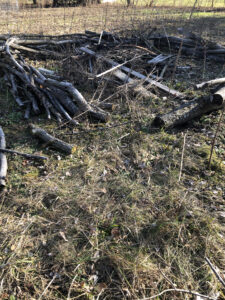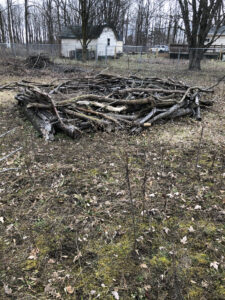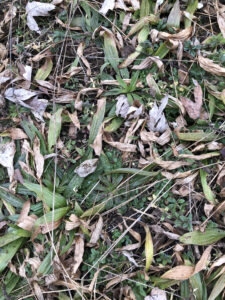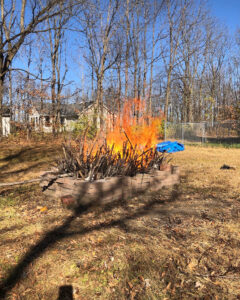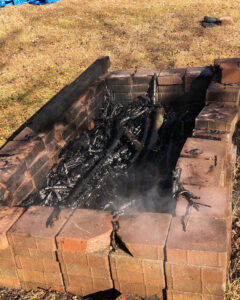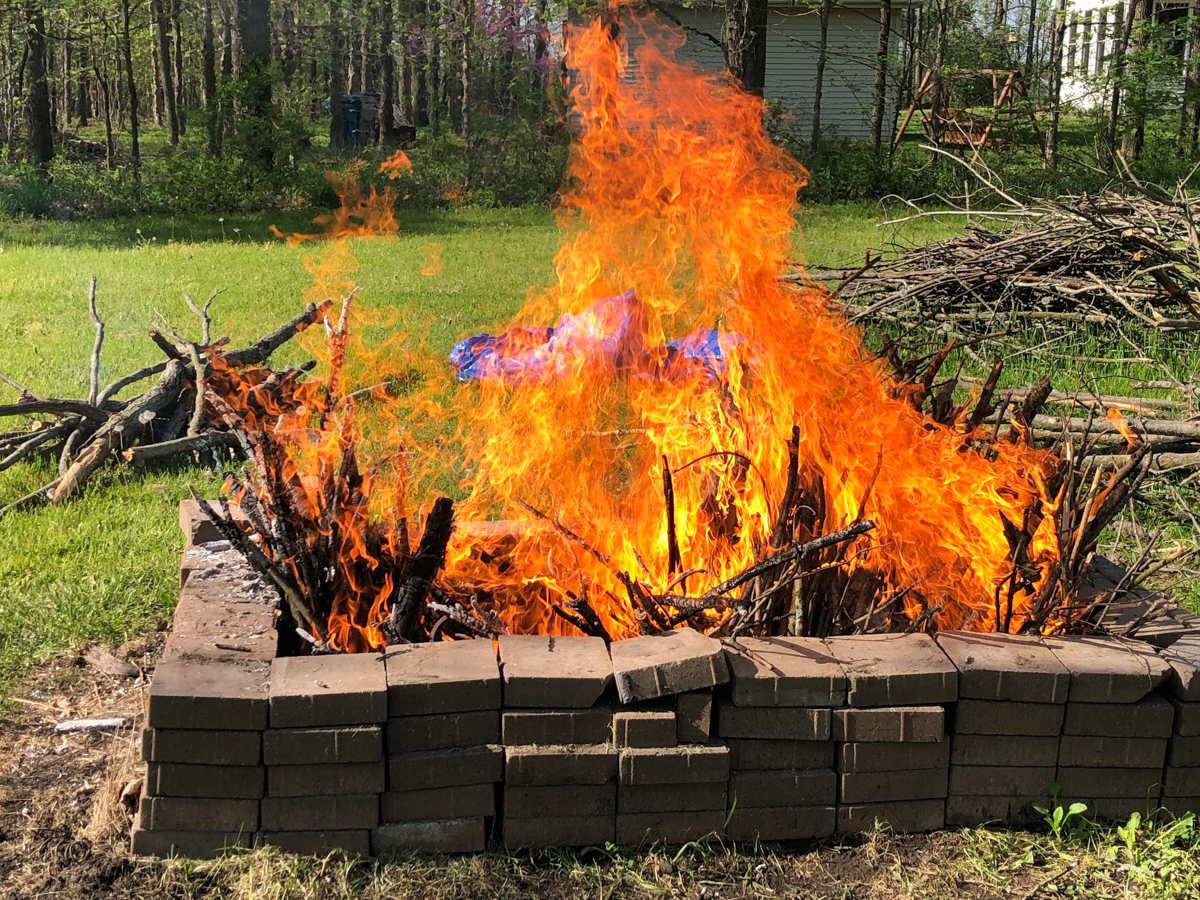Every farm needs a work area, an area devoted to creating the things that allow us to create the habitat that leads to the plants or crops. Behind Zone Two the Interface is our smallest zone, Zone Three. The “industrial” part is a bit of a joke, since our industry is limited to creating two things out of one thing. The two things are biochar and dirt. We build these from fallen maple and walnut branches. Mosty maple.
So many branches fall each year, it’s amazing to me that there are still some on the trees. The culture here tends toward seasonal massive bonfires, which would definitely be fun. But the first rule of permaculture, according to me anyway, is to eliminate waste. So I strive to make things out of the fallen branches.
Our first huge bed with other piles of branches waiting for processing.
Last summer my son Levi started this first Hugel bed. Hugelkulture, according to The Farmer’s Almanac, is “a centuries-old, traditional way of building a garden bed from rotten logs and plant debris.” We are tweaking this concept to build the beds before things rot, and to then to let nature take its course. As the plant debris decomposes, we’ll add more twigs, leaves, and plant cuttings. The rain and humidity will help stew the plant material into soil. Yes, it takes time. We’re not in a hurry.
Our first Hugel bed, half built.
This is as far as Levi got before he was attacked by ground bees. It was late August, and it turns out that’s when they are very active–at least in Zone Three. Note for the farm journal: be very careful when dipping into Zone Three in August and September.
The finished Hugel bed.
My helper Hank finished our first Hugel bed a few weeks ago. Now we’re starting to fill it with smaller branches, some cardboard. He’ll start building the second bed with the larger branches as they present themselves. An ice storm the previous winter knocked down most of my neighbor Mitchell’s conifer, and he donated those branches to the cause. Adding these will bring some welcome acidity to the soil I’m building.
Ribwort Plantain: Plantago lanceolata
Plantain is often referred to as the “white man’s footprint”. It was brought here from Europe by settlers. In Zones One and Two (the East Meadow and the Interface) I have Blackseed plantain (Plantago rogelii), which my plant app Picture This registers as native. Blackseed is the plantain I’ve seen in California, and I know first hand its medicinal value. The Blackseed lives in happy harmony with the violets. But this plantain–the Ribwort–is listed as invasive. And the bad news for me is that its everywhere in Zones Three and Four. Creating multiple Hugel beds over time will help squash it out in Zone Three. I can also sow some aggressive natives in the area and slowly drown out the Ribwort. The day I found this (after I killed the lawn and stopped mowing) was a sad day on the farm.
A biochar burn in progress.
The other major task of Zone Three is to house our biochar “factory”. We stack the smaller branches vertically and burn from top to bottom, the opposite of a bonfire. When the remains are mostly black chunks the size of dog turds, we drown the fire. We then inoculate it with a slurry of fermented fruit scraps. There are many other ways, and more complicated ways, to activate or “charge” biochar.
The biochar has been drenched.
It’s fun to watch the steam come up. The larger branches will go in a Hugel bed and continue to decompose. We’ll inoculate what’s left, let it dry, and then broadcast it on the land. We’ll save some to mix with soil when we plant trees or shrubs. And we’ll give some away.
And that’s Zone Three: The Industrial Zone.
